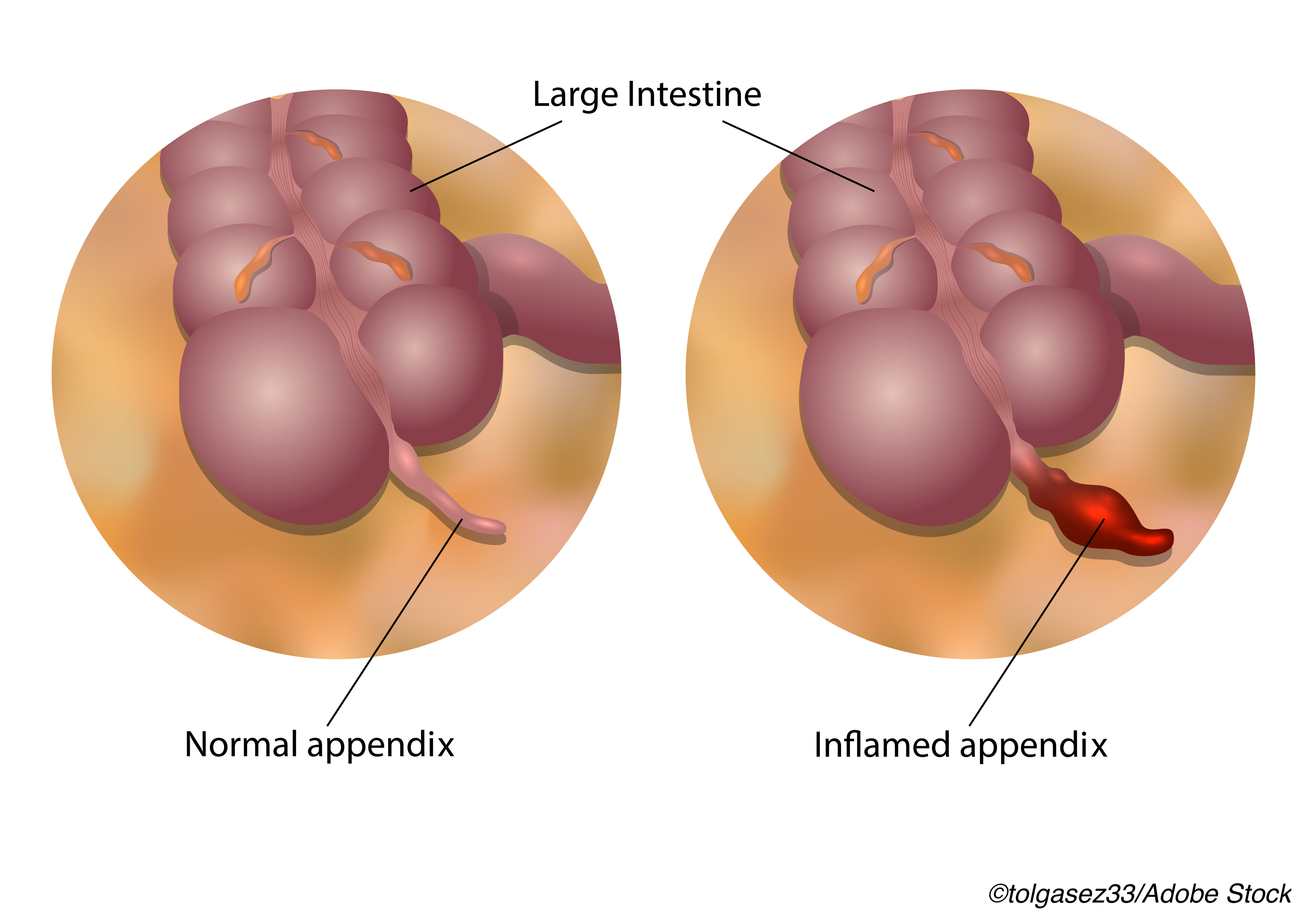Antibiotics for appendicitis treatment. Antibiotic Therapy vs. Surgery for Uncomplicated Acute Appendicitis: Examining the Evidence
What are the benefits and risks of using antibiotics alone to treat uncomplicated acute appendicitis? Can antibiotics be a viable alternative to immediate appendectomy? Explore the latest research and expert insights.
Weighing the Pros and Cons of Antibiotic Therapy for Acute Appendicitis
Appendicitis, the inflammation of the appendix, is a common medical condition that typically requires prompt surgical treatment. Traditionally, the standard of care has been immediate appendectomy, the surgical removal of the appendix. However, in recent years, there has been growing interest in the use of antibiotic therapy as an alternative to surgery for certain cases of uncomplicated acute appendicitis.
Systematic Reviews Examine Antibiotic Efficacy
A systematic review and meta-analysis published in 2014 evaluated the available evidence from four randomized trials comparing antibiotic therapy to immediate appendectomy in 900 patients with uncomplicated acute appendicitis. The review found that the overall incidence of appendicitis-related complications, such as perforation, peritonitis, and surgical site infections, was lower in the antibiotic group (18%) compared to the immediate appendectomy group (25%). Interestingly, the frequency of perforations and peritonitis did not differ significantly between the two groups.
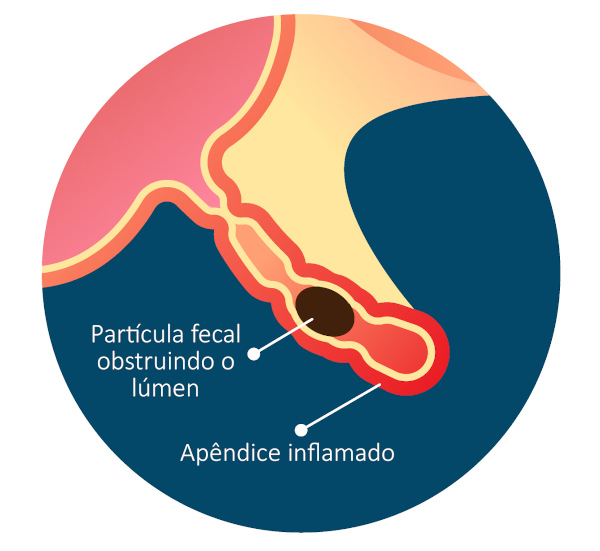
Another systematic review of five randomized trials found that the outcome at one year was optimal in 73% of patients treated with antibiotics alone, compared to 97% of those who underwent immediate appendectomy. This suggests that while antibiotic therapy may be associated with a higher risk of recurrence or treatment failure, it can be a viable option for some patients, especially those who prefer to avoid immediate surgery.
The APPAC Randomized Trial: Long-Term Outcomes
The APPAC (Appendicitis Acuta) randomized clinical trial, published in 2018, provides valuable insights into the long-term outcomes of antibiotic therapy for uncomplicated acute appendicitis. This study followed 530 patients for five years, with 273 patients assigned to receive antibiotic therapy and 257 to undergo immediate appendectomy.
At the five-year mark, the success rate of antibiotic therapy, defined as no need for appendectomy during the follow-up period, was 67.5%. This means that nearly two-thirds of the patients treated with antibiotics alone avoided surgery within the study period. The study also found that the rate of complicated appendicitis, such as perforation or abscess formation, was similar between the two groups.

Identifying Suitable Candidates for Antibiotic Therapy
While the available evidence suggests that antibiotic therapy can be an effective alternative to immediate appendectomy in selected cases of uncomplicated acute appendicitis, it is important to identify the appropriate patient population. The systematic reviews and the APPAC trial indicate that antibiotic therapy may be most suitable for patients with less severe symptoms, as the study populations generally excluded those with more advanced or complicated appendicitis.
Shared Decision-Making and Informed Consent
When considering antibiotic therapy for acute appendicitis, it is crucial to engage in shared decision-making with the patient, ensuring they are fully informed of the potential benefits and risks of both surgical and non-surgical approaches. Patients should be made aware of the higher risk of recurrence or treatment failure with antibiotic therapy, as well as the potential need for subsequent appendectomy if the initial treatment is unsuccessful.

Ongoing Research and Future Directions
The role of antibiotics in the management of acute appendicitis continues to be an active area of research. Ongoing studies and future investigations will likely provide further insights into patient selection, optimal antibiotic regimens, and long-term outcomes for this treatment approach. As the evidence evolves, healthcare providers and patients will need to carefully weigh the individual risks and benefits to determine the most appropriate course of action for each case of uncomplicated acute appendicitis.
Conclusion
In conclusion, the available evidence suggests that antibiotic therapy can be a viable alternative to immediate appendectomy in the management of select cases of uncomplicated acute appendicitis. However, it is essential to carefully evaluate the individual patient’s clinical presentation and ensure that they are fully informed of the potential benefits and risks of both surgical and non-surgical approaches before reaching a treatment decision.

Antibiotic therapy for acute appendicitis in adults. Fewer immediate complications than with surgery, but more subsequent failures
Review
. 2014 Jun;23(150):158-60.
No authors listed
PMID:
25121154
Review
No authors listed.
Prescrire Int.
2014 Jun.
. 2014 Jun;23(150):158-60.
PMID:
25121154
Abstract
Appendectomy is the standard treatment for acute appendicitis. Since the 1990s, antibiotic therapy has sometimes been proposed as an alternative to immediate appendectomy. How effective are antibiotics in adults with uncomplicated acute appendicitis, and what is the risk of complications? To answer these questions, we conducted a review of the literature using the standard Prescrire methodology. A systematic review with meta-analysis included four randomised trials of antibiotics versus immediate appendectomy, in 900 patients hospitalised with uncomplicated appendicitis. The studies included only patients with few severe symptoms, thus undermining the strength of the results. Antibiotic therapy was usually administered intravenously first, then orally. The antibiotics used were amoxicillin + clavulanic acid, cefotaxime, or a fluoroquinolone. Metronidazole or tinidazole was often added. The total duration of antibiotic treatment was 8 to 15 days. The overall incidence of complications of appendicitis (perforation, peritonitis and surgical wound infections) was 25% in the immediate appendectomy group versus 18% in the antibiotic group. The frequency of perforations and peritonitis did not differ between the groups. All symptoms of appendicitis disappeared, without relapse or rehospitalisation during the first month, in 78% of patients in the antibiotic group. After one year of follow-up, 63% of patients treated with antibiotics were asymptomatic and had no complications or recurrences.
A systematic review with meta-analysis included four randomised trials of antibiotics versus immediate appendectomy, in 900 patients hospitalised with uncomplicated appendicitis. The studies included only patients with few severe symptoms, thus undermining the strength of the results. Antibiotic therapy was usually administered intravenously first, then orally. The antibiotics used were amoxicillin + clavulanic acid, cefotaxime, or a fluoroquinolone. Metronidazole or tinidazole was often added. The total duration of antibiotic treatment was 8 to 15 days. The overall incidence of complications of appendicitis (perforation, peritonitis and surgical wound infections) was 25% in the immediate appendectomy group versus 18% in the antibiotic group. The frequency of perforations and peritonitis did not differ between the groups. All symptoms of appendicitis disappeared, without relapse or rehospitalisation during the first month, in 78% of patients in the antibiotic group. After one year of follow-up, 63% of patients treated with antibiotics were asymptomatic and had no complications or recurrences.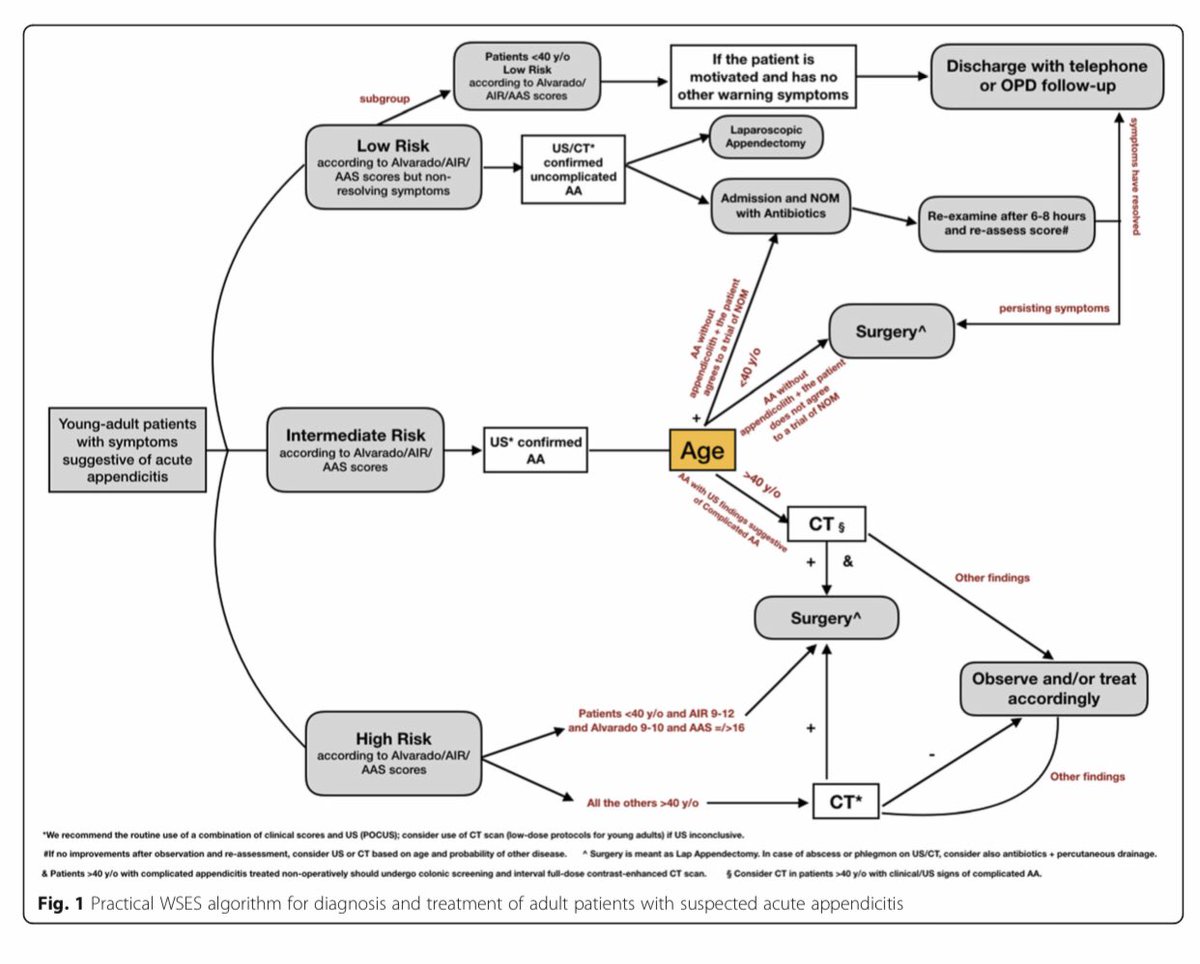 In another systematic review of five randomised trials, outcome at one year was optimal in 73% of patients treated with antibiotics alone versus 97% of patients who had immediate appendectomy. In practice, in early 2014, appendectomy remains the first-line treatment for uncomplicated acute appendicitis. In some still poorly characterised patients, the harm-benefit balance of antibiotic therapy is probably better than that of immediate appendectomy. When informed of the risks, some patients are likely to choose antibiotic therapy.
In another systematic review of five randomised trials, outcome at one year was optimal in 73% of patients treated with antibiotics alone versus 97% of patients who had immediate appendectomy. In practice, in early 2014, appendectomy remains the first-line treatment for uncomplicated acute appendicitis. In some still poorly characterised patients, the harm-benefit balance of antibiotic therapy is probably better than that of immediate appendectomy. When informed of the risks, some patients are likely to choose antibiotic therapy.
Similar articles
Antibiotics-first strategy for uncomplicated acute appendicitis in adults is associated with increased rates of peritonitis at surgery. A systematic review with meta-analysis of randomized controlled trials comparing appendectomy and non-operative management with antibiotics.
Podda M, Cillara N, Di Saverio S, Lai A, Feroci F, Luridiana G, Agresta F, Vettoretto N; ACOI (Italian Society of Hospital Surgeons) Study Group on Acute Appendicitis.

Podda M, et al.
Surgeon. 2017 Oct;15(5):303-314. doi: 10.1016/j.surge.2017.02.001. Epub 2017 Mar 9.
Surgeon. 2017.PMID: 28284517
Review.
Five-Year Follow-up of Antibiotic Therapy for Uncomplicated Acute Appendicitis in the APPAC Randomized Clinical Trial.
Salminen P, Tuominen R, Paajanen H, Rautio T, Nordström P, Aarnio M, Rantanen T, Hurme S, Mecklin JP, Sand J, Virtanen J, Jartti A, Grönroos JM.
Salminen P, et al.
JAMA. 2018 Sep 25;320(12):1259-1265. doi: 10.1001/jama.2018.13201.
JAMA. 2018.PMID: 30264120
Free PMC article.Clinical Trial.
Use of antibiotics alone for treatment of uncomplicated acute appendicitis: a systematic review and meta-analysis.
Liu K, Fogg L.
Liu K, et al.
Surgery. 2011 Oct;150(4):673-83. doi: 10.1016/j.surg.2011.08.018.
2011 Oct;150(4):673-83. doi: 10.1016/j.surg.2011.08.018.
Surgery. 2011.PMID: 22000179
Review.
Antibiotic Therapy vs Appendectomy for Treatment of Uncomplicated Acute Appendicitis: The APPAC Randomized Clinical Trial.
Salminen P, Paajanen H, Rautio T, Nordström P, Aarnio M, Rantanen T, Tuominen R, Hurme S, Virtanen J, Mecklin JP, Sand J, Jartti A, Rinta-Kiikka I, Grönroos JM.
Salminen P, et al.
JAMA. 2015 Jun 16;313(23):2340-8. doi: 10.1001/jama.2015.6154.
JAMA. 2015.PMID: 26080338
Clinical Trial.
Comparison of Antibiotic Therapy and Appendectomy for Acute Uncomplicated Appendicitis in Children: A Meta-analysis.
Huang L, Yin Y, Yang L, Wang C, Li Y, Zhou Z.
Huang L, et al.
JAMA Pediatr. 2017 May 1;171(5):426-434. doi: 10.1001/jamapediatrics.2017.0057.
doi: 10.1001/jamapediatrics.2017.0057.
JAMA Pediatr. 2017.PMID: 28346589
Free PMC article.
See all similar articles
Cited by
Nonoperative Antibiotic Treatment of Appendicitis in Adults: A Survey among Clinically Active Surgeons.
Reinisch A, Reichert M, Hecker A, Padberg W, Ulrich F, Liese J.
Reinisch A, et al.
Visc Med. 2020 Dec;36(6):494-500. doi: 10.1159/000506058. Epub 2020 Feb 11.
Visc Med. 2020.PMID: 33447606
Free PMC article.[Antibiotic treatment vs. appendectomy for non-perforated appendicitis in adults].
Schölch S, Reißfelder C.
Schölch S, et al.
Chirurg. 2019 Mar;90(3):178-182. doi: 10.1007/s00104-018-0756-5.
Chirurg. 2019.PMID: 30367206
Review.

German.Antibiotics Versus Appendicectomy for the Treatment of Uncomplicated Acute Appendicitis: An Updated Meta-Analysis of Randomised Controlled Trials.
Rollins KE, Varadhan KK, Neal KR, Lobo DN.
Rollins KE, et al.
World J Surg. 2016 Oct;40(10):2305-18. doi: 10.1007/s00268-016-3561-7.
World J Surg. 2016.PMID: 27199000
Publication types
MeSH terms
Substances
Most patients with appendicitis can have antibiotics as their first treatment, rather than appendectomy
Key Takeaways
- Study results show the safety and sustainability of another treatment option besides surgical removal of the appendix.
- Study findings highlight the need for increased shared decision making between surgeons and patients on the need for and timing of an appendectomy.

- To help patients make treatment decisions regarding their appendicitis, CODA investigators developed an online decision-making tool.
CHICAGO: About half of patients with appendicitis do not need an appendectomy procedure up to four years after receiving a course of antibiotics, according to final results of the Comparison of Outcomes of antibiotic Drugs and Appendectomy (CODA) trial. The study findings were presented today at the American College of Surgeons (ACS) virtual Clinical Congress 2021, simultaneous with online publication in the New England Journal of Medicine.1
These results show the safety and sustainability of another treatment option besides surgical removal of the appendix. Appendectomy has been the standard appendicitis treatment for more than 120 years and is the most common emergency abdominal procedure in the U.S.2
The research findings also highlight the need for shared decision making between patients and surgeons, study investigators said.
“Based on their characteristics, circumstances, and priorities, antibiotics will be a good treatment for some, but probably not all patients with appendicitis,” said co-principal investigator David R. Flum, MD, MPH, FACS, professor and associate chair of surgery at University of Washington (UW) School of Medicine in Seattle. David Talan, MD, emergency medicine physician, Geffen School of Medicine at UCLA, is also co-principal investigator.
CODA is the largest randomized clinical trial to explore whether antibiotic treatment is as good as appendectomy in treating appendicitis. The study was conducted at 25 U.S. medical centers in 1,552 adults with appendicitis who were randomly assigned to receive either antibiotics or appendectomy.
Based partly on early CODA results3 and evidence from other studies, the ACS strengthened its guidance for appendicitis treatment during the COVID-19 pandemic last December.4 The College called antibiotics “an acceptable first-line treatment” for most patients with appendicitis.
Higher need for appendectomy with time
Among the study patients who initially received nonoperative treatment, the proportion who eventually underwent an appendectomy increased over time. Preliminary results of the study, reported October 5, 2020, showed only 30 percent of the antibiotics-alone group required an appendectomy within three months.3 Recurrent appendicitis was the primary reason for getting an appendectomy after antibiotic treatment, according to updated results.
With longer-term follow-up, the investigators found appendectomy rates in the antibiotics group were 40 percent one year after antibiotic therapy and 46 percent at two years, rising to 49 percent at three and four years.
“While some clinicians and patients may determine that these longer-term rates of appendectomy make antibiotics a less desirable treatment, a very high proportion of patients report a preference for antibiotics, even if appendectomy may ultimately be necessary,” the study authors wrote. They referred to recent survey results indicating patient preference.5
They referred to recent survey results indicating patient preference.5
“Especially in the emergency setting, patients may prefer to avoid or delay an operation for reasons including current demands at work and home, lack of health insurance, or anxiety,” said Giana H. Davidson, MD, MPH, FACS, a co-investigator and an associate professor of surgery at UW School of Medicine.
Complications were uncommon in both treatment groups after the first month, researchers reported. A predictor of antibiotic-treated patients eventually having an appendectomy was the presence in the first 48 hours of an appendicolith, or a small stone in the appendix. After 30 days, that increased risk reportedly decreased.
Decision-making help
To help patients make treatment decisions regarding their appendicitis, CODA investigators developed an online decision-making tool, available at http://www.appyornot.org/. The decision aid includes a video in English and Spanish and provides information about treatment risks and benefits. It also asks users questions about personal preferences, priorities, and resources to help them choose a treatment based on their individual situation.
It also asks users questions about personal preferences, priorities, and resources to help them choose a treatment based on their individual situation.
“Our hope is that a standardized tool that can be easily disseminated across health systems can help patients effectively get information about their diagnosis and clinical outcomes, and help facilitate treatment discussions between patients and their surgeons,” Dr. Davidson said. “It has input from patient stakeholders, surgeons, and emergency medicine doctors to help give patients the information they need to make their choices.”
The online tool will be part of a national implementation program, led partly by the ACS, which will include training clinicians and developing a protocol to standardize appendicitis treatment.
No single patient factor can predict the success or failure of either antibiotic or surgical treatment for every patient, said co-investigator Callie Thompson, MD, FACS, assistant professor of surgery, University of Utah Health, Salt Lake City.
“Picking ‘the best’ candidate for either therapy comes down to having a discussion with each patient about their goals and values for treatment of their appendicitis and discussing the risks and benefits of each treatment with those goals and values in mind,” she said.
The CODA trial showed a higher long-term appendectomy rate in antibiotic-assigned patients than in a large similar study conducted in Europe (“APPAC” trial),6 which had a five-year appendectomy rate of 39 percent in its antibiotics group. The CODA trial differed, however, because it included patients with perforation of the appendix or an appendicolith, said co-investigator Lillian Kao, MD, MS, FACS, professor and division chief of acute care surgery at McGovern Medical School at UTHealth, Houston.
Although the CODA trial did not include children, Dr. Davidson said other studies are ongoing in pediatric patients with appendicitis to determine if initial treatment with antibiotics is right for them.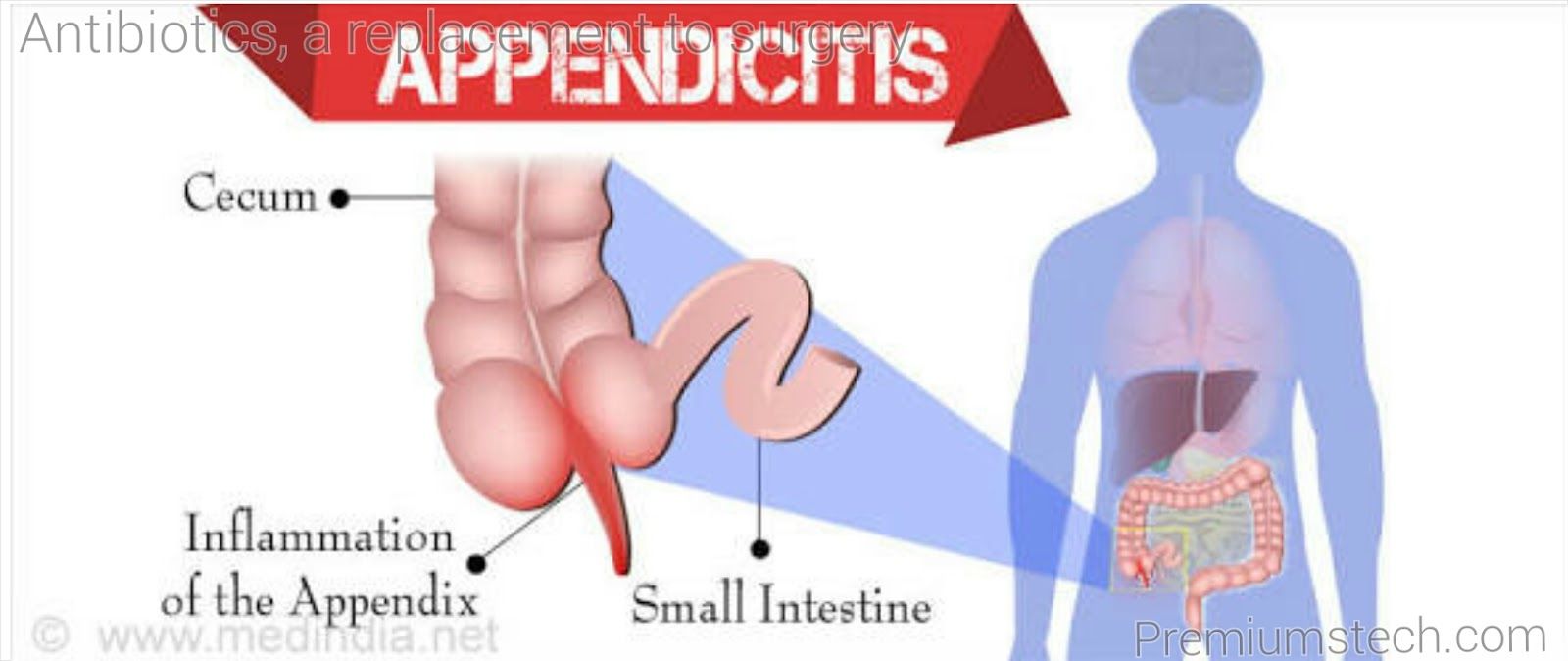
For a listing of CODA study sites and other study authors, click here.
“FACS” designates that a surgeon is a Fellow of the American College of Surgeons.
The CODA trial is funded through a Patient-Centered Outcomes Research Institute (PCORI) Award (1409-24099).
The authors report no relevant disclosures.
Citation: CODA Collaborative. Antibiotics vs Appendectomy for Acute Appendicitis—Longer Term Outcomes. Research letter. N Engl J Med. 2021.DOI:10.1056/NEJMc2116018
Presented simultaneously at virtual American College of Surgeons Clinical Congress 2021.
- CODA Collaborative. Antibiotics versus Appendectomy for Acute Appendicitis—Longer Term Outcomes. Research letter. N Engl J Med. Posted online October 25, 2021. https://www.nejm.org
- Newhall K, Albright B, Tosteson A, Ozanne E, Trus T, Goodney PP. Cost-effectiveness of prophylactic appendectomy: a Markov model. Surg Endosc. 2017 Sep;31(9):3596-3604.

- CODA Collaborative. A Randomized Trial Comparing Antibiotics with Appendectomy for Appendicitis (CODA). N Engl J Med. 2020;383(20):1907-1919. DOI:10.1056/NEJMoa2014320.
- American College of Surgeons. ACS Strengthens Its Emergency General Surgery Guidelines for Appendicitis Treatment During COVID-19. Bulletin Brief. Posted online December 8, 2020. Accessed October 19, 2021. http://www.facs.org/publications/bulletin-brief/120820/clinical.
- Rosen JE, Agrawal N, Flum Dr, Liao JM. Willingness To Undergo Antibiotic Treatment Of Acute Appendicitis Based on Risk of Treatment Failure. Letter. Br J Surg. Published online August 17, 2021. DOI:10.1093/bjs/znab280.
- Salminen P, Paajanen H, Rautio T, et al. Antibiotic Therapy vs Appendectomy for Treatment of Uncomplicated Acute Appendicitis: The APPAC Randomized Clinical Trial. JAMA. 2015;313(23):2340-2348.
About the American College of Surgeons
The American College of Surgeons is a scientific and educational organization of surgeons that was founded in 1913 to raise the standards of surgical practice and improve the quality of care for all surgical patients. The College is dedicated to the ethical and competent practice of surgery. Its achievements have significantly influenced the course of scientific surgery in America and have established it as an important advocate for all surgical patients. The College has more than 87,000 members and is the largest organization of surgeons in the world. “FACS” designates that a surgeon is a Fellow of the American College of Surgeons.
The College is dedicated to the ethical and competent practice of surgery. Its achievements have significantly influenced the course of scientific surgery in America and have established it as an important advocate for all surgical patients. The College has more than 87,000 members and is the largest organization of surgeons in the world. “FACS” designates that a surgeon is a Fellow of the American College of Surgeons.
Antibiotics cure more than half of appendicitis cases without surgery
Finnish scientists have published a report on a five-year study of treating acute appendicitis with appendectomy (removal of the inflamed appendix) and antibiotics. Of the 256 patients treated with medication, 61 percent did not have surgery in the next five years. The results are published in JAMA .
In appendicitis, the process of the caecum, the appendix, becomes inflamed. Since the appendix is a rudimentary organ (it has lost its main role – digestive – in the course of evolution), an operation to remove it in case of inflammation without complications is quite safe. The first such operation was carried out in the first half of the 18th century: then an 11-year-old boy underwent an appendectomy, who quickly recovered after the operation.
The first such operation was carried out in the first half of the 18th century: then an 11-year-old boy underwent an appendectomy, who quickly recovered after the operation.
Treatment prior to appendectomy also requires intravenous antibiotics to reduce inflammation. In the absence of perforation (rupture) of the appendix, antibiotics can greatly improve the patient’s condition, which suggests that antibiotics may be sufficient to treat uncomplicated appendicitis. However, all attempts at clinical trials made so far have had serious limitations: a small number of participants and the absence of a control group.
Scientists led by Paulina Salminen from the University of Turku decided to collect more reliable data. They conducted a randomized control study of 530 people (aged 18 to 60 years) diagnosed with acute appendicitis without complications. Of all the participants, 273 underwent standard procedures and appendectomy, and 257 received ertapenem (an antibiotic from the carbapenem class) intravenously for three days, after which they needed to take antibiotics (levofloxacin and metronidazole) for another week.
Patients were followed up for five years at the end of treatment: scientists were interested in recurrence of inflammation after antibiotic treatment, the occurrence of complications, as well as the stay in the hospital after the end of treatment and the recovery process (hospital period). Of the patients treated with antibiotics, 70 needed surgery within the first year after the end of treatment, and another 30 within the next five years. In addition, during the observed period, postoperative complications (abdominal pain, inflammation of the surgical site and hernia) were observed in 24.4 percent of patients after appendectomy and in 6.5 percent after antibiotic treatment. In addition, the recovery period after treatment in people treated with antibiotics was 11 days shorter.
Research results show great potential for non-surgical treatment of appendicitis. It should be clarified that all cases of appendicitis observed by scientists had no complications – sometimes immediate surgical intervention is required to prevent death.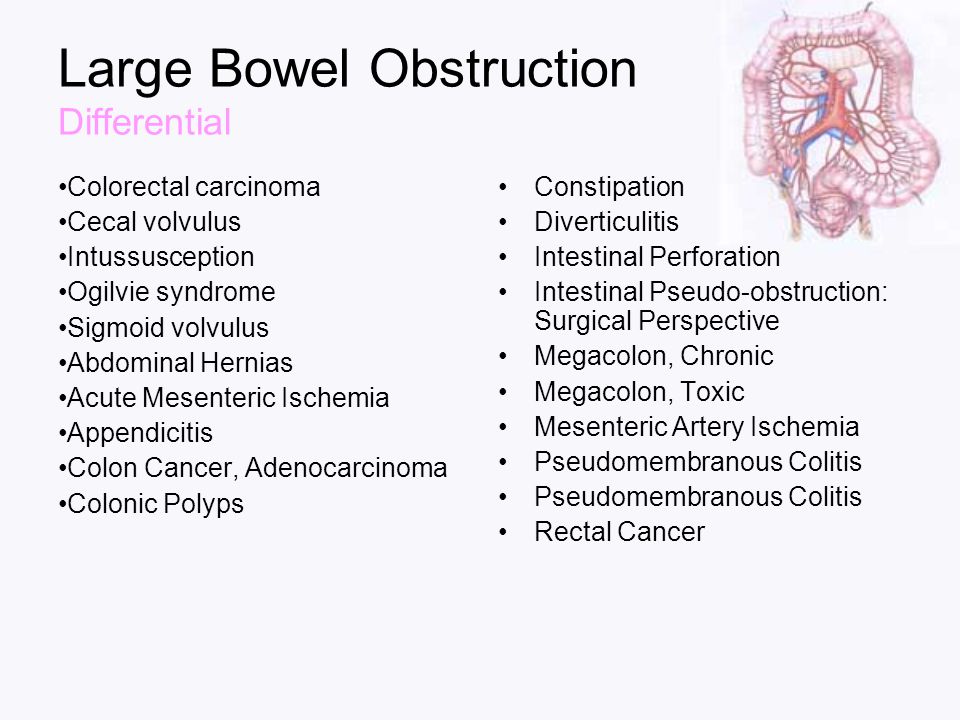 Complications of inflammation of the appendix include, for example, abscesses and abdominal peritonitis.
Complications of inflammation of the appendix include, for example, abscesses and abdominal peritonitis.
Last summer, scientists were able to demonstrate the effectiveness of the new antibiotic clostioamide in the treatment of drug-resistant gonorrhea. You can read about it in our note.
Elizaveta Ivtushok
Found a typo? Select the fragment and press Ctrl+Enter.
Antibiotics may be first-line therapy for uncomplicated appendicitis
After numerous recent studies have shown that antibiotics work as well as surgery in most cases of uncomplicated appendicitis, a non-surgical approach can now be considered the standard option, says review article in magazine JAMA . The review , published Dec. 14, led by Theodore Pappas, professor of surgery at the Duke University School of Medicine, provides general evidence that antibiotics successfully treat up to 70% of cases of appendicitis. Surgery, usually performed laparoscopically, remains the last option for otherwise healthy patients with a severely inflamed appendix or other factors that increase the risk of perforation.
“Acute appendicitis is the world’s most common abdominal surgical emergency, affecting about one in 1,000 adults,” says Pappas. “Until recently, the only treatment option was surgery, so having a non-surgical approach for many of these cases is of great importance to both patients and the healthcare system.” Pappas noted that the criteria for determining the best treatment approach are nuanced but not overly complex. Cases of appendicitis – characterized by abdominal pain that often migrates to the lower right side, nausea and vomiting, and mild fever – are confirmed by ultrasound and/or CT. If the scan reveals no complications, most of these patients can receive antibiotics instead of an appendectomy. Antibiotics may also be the first line of treatment for patients with severe symptoms, the elderly, or those with medical conditions that increase the risk of surgery.
“We think that 60% to 70% of patients would be good candidates for consideration for antibiotic use,”
, Pappas said. “Many point out that patient preferences can be taken into account when making a decision, so it’s important to provide relevant literature and educate the public.” Pappas added that antibiotics are not always an absolute cure. In about 40% of cases, patients who recover from an appendicitis attack after taking antibiotics have a new attack and eventually require surgical removal of the appendix.
“Many point out that patient preferences can be taken into account when making a decision, so it’s important to provide relevant literature and educate the public.” Pappas added that antibiotics are not always an absolute cure. In about 40% of cases, patients who recover from an appendicitis attack after taking antibiotics have a new attack and eventually require surgical removal of the appendix.
“It’s important to consider each case and its unique context when we look at patient preferences,” Pappas said. “If someone has appendicitis and is going to his brother’s wedding the next day, antibiotics might be a good option. If he has appendicitis and plans to travel to Alaska next year, he might want to consider an appendectomy given that the condition may recur.”
Acute appendicitis is the most common abdominal surgical emergency in the world, with an annual frequency of 96.5-100 cases per 100,000 adults.
The clinical diagnosis of acute appendicitis is based on the history and physical examination, laboratory tests, and imaging. The classic symptoms of appendicitis include vague pain in the periumbilical region, anorexia/nausea/intermittent vomiting, pain migration to the right lower quadrant, and low temperature. Acute appendicitis is diagnosed in about 90% of patients with these symptoms. Laparoscopic appendectomy remains the most common treatment. However, a growing body of evidence suggests that broad-spectrum antibiotics, such as piperacillin-tazobactam monotherapy or combination therapy of cephalosporins or fludroquinolones with metronidazole, successfully treat uncomplicated acute appendicitis in about 70% of patients.
The classic symptoms of appendicitis include vague pain in the periumbilical region, anorexia/nausea/intermittent vomiting, pain migration to the right lower quadrant, and low temperature. Acute appendicitis is diagnosed in about 90% of patients with these symptoms. Laparoscopic appendectomy remains the most common treatment. However, a growing body of evidence suggests that broad-spectrum antibiotics, such as piperacillin-tazobactam monotherapy or combination therapy of cephalosporins or fludroquinolones with metronidazole, successfully treat uncomplicated acute appendicitis in about 70% of patients.
Specific computed tomography (CT) findings such as dilatation of the appendix (appendix diameter ≥7 mm) or the presence of appendicitis, defined as a collection of stool in the lumen of the appendix, identify patients who are more likely to be treated with an antibiotic strategy will be unsuccessful. CT shows appendicitis, mass effect, and an enlarged appendix greater than 13 mm, which is associated with a higher risk of treatment failure (≈40%) with antibiotics.


 2011 Oct;150(4):673-83. doi: 10.1016/j.surg.2011.08.018.
2011 Oct;150(4):673-83. doi: 10.1016/j.surg.2011.08.018.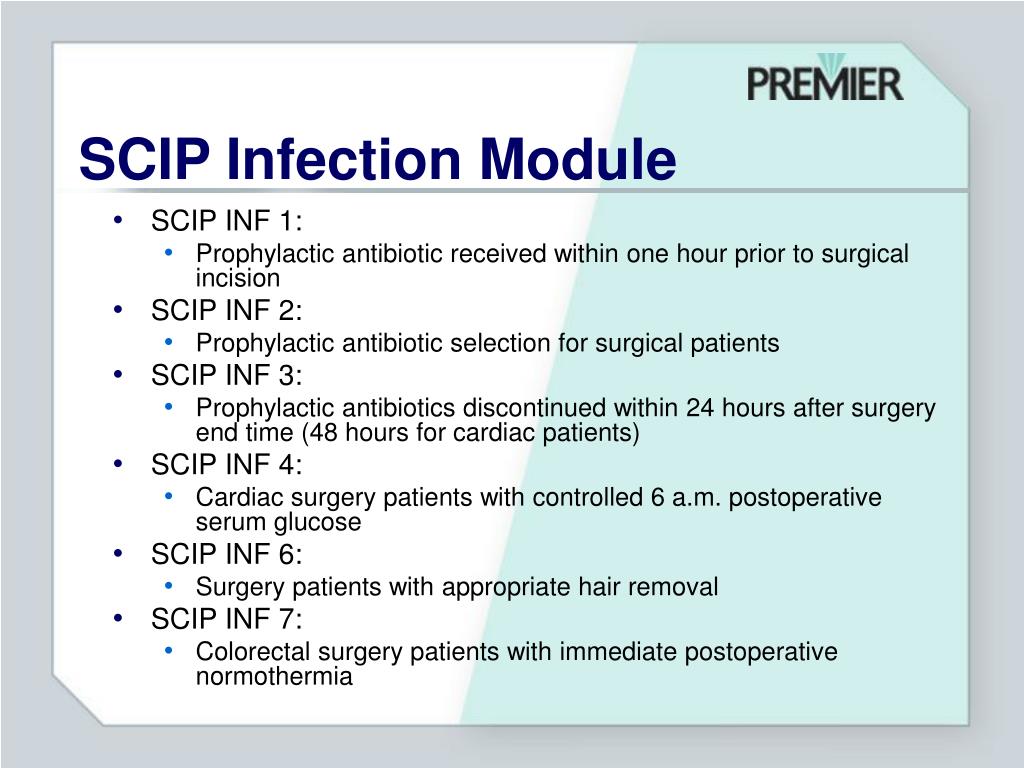 doi: 10.1001/jamapediatrics.2017.0057.
doi: 10.1001/jamapediatrics.2017.0057.
